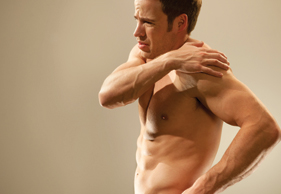Diabetic Walker
I recently got diagnosed with Type 2 Diabetes. I weighed 116kg when diagnosed, but have since lost 17kg. I am planning on doing my first 5km walk end of July, and I am planning on doing a 10km run in a year from now, therefore I want to start jogging now, but I am worried I might hurt myself because I am still so heavy. Should I wait till I lose another 10kg or 20kg or can I start slowly? – CATHERINE GOOSEN, GOODWOOD
ANSWER
There are many benefits of exercise, especially walking, for Type 2 diabetics. A study done by Newcastle University academics Dr Michael Trenell and Prof Roy Taylor has shown that a 45-minute daily walk can help to control diabetes. It further found that Type 2 diabetics who walk regularly can reduce the negative effects of diabetes. In the study, published in the journal Diabetes Care, Type 2 diabetics were paired with a control group who didn’t have diabetes. Each person was given a pedometer and asked to walk over 10 000 steps a day. The researchers found that walking for an extra 45 minutes daily meant burning 20% more fat – improving their muscles’ ability to store sugar, which helps to control diabetes.
What is exciting about this study is that it provides an immediate way to control diabetes without drugs. By building physical activity into everyday life, the difficulty of making time to go out just for exercise is avoided. It is an important and simple health message: Walking 45 minutes extra a day helps diabetes, and the sooner one starts with this the better.
Walking every day will help diabetics with:
• Improved glucose control – Exercise helps muscles absorb blood sugar, preventing it from building up in the bloodstream. This effect can last for hours or even days, but it’s not permanent. That’s why walking regularly is essential for continued blood glucose control.
• Better cardiovascular fitness – Because people with diabetes are at increased risk for heart disease, this is an important benefit.
• Weight control – Regular walking burns calories, which can help you to lose weight, or maintain weight loss, and in turn can reduce health risks.
• Reduce body fat percentage.
• Increase bone density.
• Lower blood pressure.
The wider benefits of walking are well attested. If you’re yet to establish the habit of walking every day, remember that walking is one of the best exercises you can do, because:
• You don’t need special clothes.
• If you’re very overweight, you can just walk for a few minutes.
• Friends and family can join you on a walk.
• You can walk anywhere: Cities, countryside, shopping malls.
One of the most common reasons given for not exercising is lack of time, but there’s really no excuse for not fitting walking into your day. Contact Run/Walk for Life on 086 100 5566 or info@rwfl.co.za for a branch near you.
Modern Athlete Expert
RAY BIENEDELL
Run/Walk for Life (Group Director of Operations)
Cramping Arms
I have recently been suffering from cramps on my arms during long distance runs. So far it has happened to me twice. It first started this year during the Two Oceans Marathon at about the 48km mark and then again at about the 15km mark to go at Comrades. I noticed that my legs are super OK when this happens, it’s only my arms, and that slows me down terribly. Please help! – TSHEPO MAMORARE, RANDBURG HARRIERS
ANSWER
The same way that your legs fatigue during a long run, so does your upper body. The difference is that runners train their legs to cope with the distance, but very few train their upper body. Over time, as you tire while running, these muscles fatigue and start cramping. Strength training for the biceps, triceps, upper back and shoulders can help to alleviate or delay the onset of fatigue, pain and cramping.
Tension can also build up in the upper back and shoulder region from keeping your arms in the same position for long periods of time. This can also result in inadequate blood supply to the arms. In order to stop the build up of tension, keep your upper limbs relaxed while running. Make sure your hands are not held in a tight fist, nor are your arms bent rigidly at your elbows. Drop your arms intermittently, relaxing your arms at your side. You can also shake your arms out, and do a few shoulder shrugs and backward shoulder rolls.

Modern Athlete Expert
TONI HESP
Physiotherapist in Edenvale, Johannesburg. Has finished 21 Comrades, four Ironmans and two New York Marathons, plus various cycling and canoeing events.


